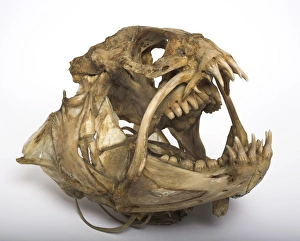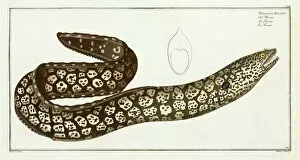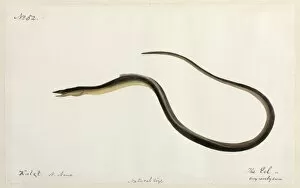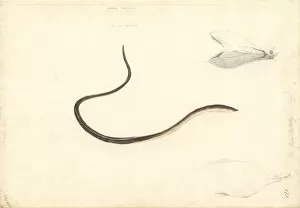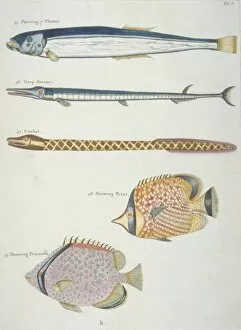Anguilliform Collection
"Discover the mesmerizing world creatures, from the fierce Anarhichas lupus, also known as the wolf eel, to the elegant Muraena helena and its graceful movements
All Professionally Made to Order for Quick Shipping
"Discover the mesmerizing world creatures, from the fierce Anarhichas lupus, also known as the wolf eel, to the elegant Muraena helena and its graceful movements. Dive into the depths with Echidna nebulosa, a clouded eel that seems to vanish in misty waters. Explore LS Plate 179 from the John Reeves Collection and be captivated by its intricate details capturing an elusive beauty. Immerse yourself in freshwater wonders with artwork C016/5567 showcasing a mysterious freshwater eel gliding through serene streams. Marvel at an enchanting eel illustration that brings these enigmatic creatures to life before your eyes. Transport yourself back in time with A Natural History of Jamaica and witness historical depictions of these captivating beings. Delight in a colourful illustration featuring two fish accompanied by an alluring eel, creating a vibrant underwater tableau. Uncover secrets hidden beneath European waters with Apterichtus caecus, the finless eel that navigates effortlessly without fins. Continue your journey through anguilliform marvels as you explore LS Plate 189 from the John Reeves Collection and be enchanted by its exquisite portrayal of another fascinating species. Be enthralled by Plate 119 from the same collection which showcases yet another unique member of this diverse family. Indulge your curiosity further with LS Plate 176 from the John Reeves Collection; let it transport you deeper into this extraordinary realm where mystery intertwines seamlessly with beauty. "


